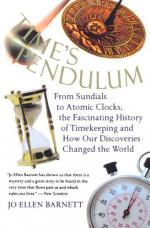|
This section contains 404 words (approx. 2 pages at 300 words per page) |
The atomic clock is the most precise measurement of time that exists. The National Institute of Standards and Technology based in Boulder, Colorado houses a cesium atomic clock (so-called because it uses atoms of cesium) that is accurate to one second in six million years. Before the atomic clock, the rotational period of Earth was taken as the standard of time. The second was defined as 1/86,400 of a solar day. But the Earth's rotation is irregular, and the second needed to be redefined.
American physicist Isador Rabi suggested in the 1940s that a clock could be based on an atom's internal oscillations. Atoms are accurate because of their reliability: an atom's motion will never falter or deviate from a fixed period. In 1949, the U.S. National Bureau of Standards (now the NIST) built the first atomic clock using a molecule of ammonia. A few years later, the National Bureau of Measures built a clock using cesium atoms. Since 1967, the official, international length of the second has been defined by atomic standards.
In an atom, electrons orbit a nucleus. According to the laws of quantum mechanics, these electrons may exist only in certain states. In other words, they may orbit the nucleus in one of two ways. They may move between these states if they are exposed to electromagnetic radiation (light or radio waves) at a specific frequency. The correct frequency depends on the amount of energy it takes for the electrons to move from one state to another. Electrons "know" when they are exposed to radiation at the right frequency, and only then will they shift from one energy state to another. The atomic clock is based on the period of that shift.
In an atomic clock, atoms are sprayed through electromagnetic radiation (such as microwaves) that oscillate at the frequency needed to make the electrons jump from one energy state to another. If the frequency is correct, then a majority of the original atoms should make the transition from their original state. A counter in the clock tracks the time it takes for most of the atoms to make the shift. In a cesium clock, it has been determined that one second is equal to 9,192,631,770 oscillations or transitions.
Atomic clocks are useful for satellite navigation, which allow us to measure distances on Earth. They also helped confirm Einstein's prediction that time slows down for observers moving at great speeds.
|
This section contains 404 words (approx. 2 pages at 300 words per page) |


